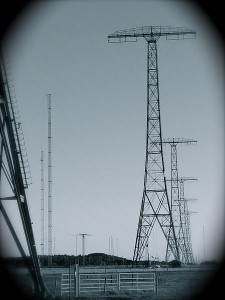 Thanks to Andrea Borgnino for sharing this article:
Thanks to Andrea Borgnino for sharing this article:
(Source: Der Spiegel)
A pair of Russian agents was convicted on Tuesday of spying in Germany for more than 20 years. Russian President Vladimir Putin is personally conducting the negotiations for a potential exchange, but now a new case is straining German-Russian relations.
A treasure in the exhibit room at the German Federal Criminal Police Office in the western city of Wiesbaden has aroused a great deal of curiosity among the world’s intelligence agencies. It looks like an ordinary, black laptop bag. It contains a Siemens hard drive, or at least it looks that way. But a notch reveals that it is not an off-the-shelf product. It’s a high-frequency satellite transmitter, with an antenna hidden in the flap of the bag.
The device is state-of-the-art military technology, a “top quality intelligence product,” raves an expert. In the spy wars, German authorities haven’t gotten their hands on anything this important in years. The significance of this high-tech device, however, approaches that of the legendary Enigma code machine from World War II. Domestic intelligence officials at the Federal Office for the Protection of the Constitution (BfV) in Cologne are eager to examine the device. The American intelligence agencies, the CIA and the NSA, as well as Israel’s Mossad have also asked for permission to inspect the miraculous piece of equipment.
The satellite device served Andreas and Heidrun Anschlag as a connection back home. They were Russian spies who lived as agents in Germany for more than 20 years, until they were arrested in October 2011.
[…]In their dispatches, which the couple received with a shortwave radio, the agent controllers in Directorate S of the SWR referred to the Anschlags as “Pit” and “Tina.” They were given the state-of-the-art satellite equipment during a trip to St. Petersburg and Moscow. They also attended a course on the use of a decoding program called “Sepal” and an encoding program called “Parabola.”
This enabled “Pit” and “Tina” to establish a secure connection to Moscow. All they had to do was pay attention to the times when one of the six to eight satellites sent into space by Russian intelligence for spying activities came into range. A red light on their radio device signaled to the Anschlags that the satellite was approaching, while a blue light indicated the transmission of encoded messages.
Sometimes, when the equipment failed, the Anschlags placed the transmitter below one of their attic windows, among the fruit trees in the garden or on a nearby hill. The hills directly behind the house proved to be unsuitable, because nearby wind turbines apparently interrupted communication with the satellite.[…]
